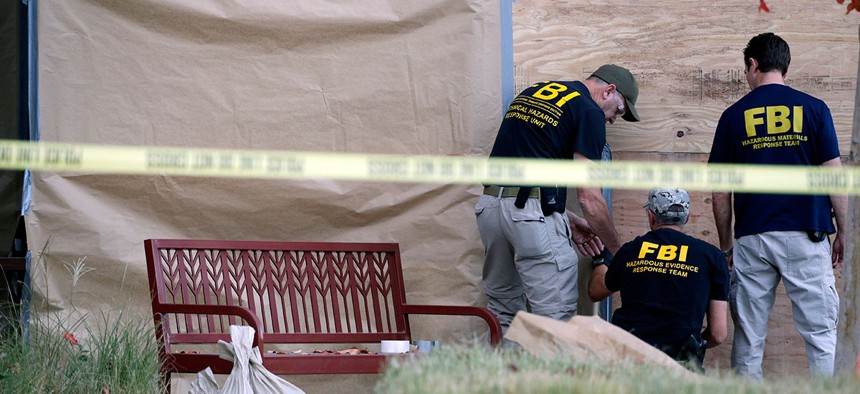The Deepening Mystery of the San Bernardino Shooters' Social-Media Postings
FBI Director James Comey said the attackers sent messages, but they were private and couldn't have been caught by intelligence.
Did American intelligence miss crucial warning signs about San Bernardino shooters Syed Rizwan Farook and Tashfeen Malik? FBI Director James Comey sought to dampen speculation on Wednesday morning, speaking with New York Police Commissioner Bill Bratton.
For years before they attacks, “they are communicating online, showing signs in that communication of their joint commitment to jihad and to martyrdom,” he said. “Those communications are private direct messages.”
In fact, he said, there was no evidence of public postings that might have raised red flags.
Soon after the attacks, multiple news organizations reported, generally with Facebook’s say-so, that Malik had posted on Facebook a pledge of allegiance to Abu Bakr al-Baghdadi, the ISIS chief. At the time, the FBI merely said it was aware of the reports. But in recent days, news reports have raised questions about whether the Department of Homeland Security should have noticed postings by Malik that might have telegraphed her intention to conduct an attack. According to some reports, U.S. investigators are barred from even checking the social-media presence of visa applicants. During Tuesday’s Republican debate, candidate Carly Fiorina blasted the process. “For heaven's sakes, every parent in America is checking social media and every employer is as well, but our government can’t do it,” she said. “The bureaucratic procedures are so far behind. Our government has become incompetent, unresponsive, corrupt. And that incompetence, ineptitude, lack of accountability is now dangerous.”
But Comey’s comments suggest that even if DHS’s policies are overripe for review, it might not have made much difference in this particular case. While he declined to name the social network or networks involved, what Comey said corresponds with a Los Angeles Times report from Monday that noted that investigators have found private communications:
San Bernardino shooter Tashfeen Malik sent at least two private messages on Facebook to a small group of Pakistani friends in 2012 and 2014, pledging her support for Islamic jihad and saying she hoped to join the fight one day, two top federal law enforcement officials said Monday.
As Comey noted on Monday, the FBI does not—and, he implicitly argued, should not—comb through direct communications that American citizens send unless there’s probable cause to be doing so. It’s not clear whether metadata on this sort of message would have been swept up in the NSA’s collection of information. After widespread backlash to the revelations provided by Edward Snowden about mass surveillance, there’s been a turn toward a demand for greater surveillance since the San Bernardino attacks, both in public polling and by politicians.
The messages were also, Comey said, general in nature—about a commitment to jihad, rather than about specific plots.
Comey’s comments leave some important questions unanswered. The way that officials talk about internet tools is often unusual or somewhat opaque. “These communications are private direct messages, not social-media messages,” he said. Comey offered no indication he was contradicting news reports of Malik’s Facebook pledge of allegiance, though his comments could be read to do so.
The fact that the messages in question were private, beyond the reasonable ken of law enforcement and well past constitutional limitations, is yet another indication of the steep challenge American officials face in trying to stop homegrown attackers who are inspired by ISIS or other terrorist groups but appear to be acting largely autonomously, without instruction from known terrorist leaders.
In the wake of an attack like this, it seems like digital evidence ought to have provided a key to stopping the carnage. But the evidence so far suggests the best chances at prevention would have been entirely analog: if someone in the family had reported the couple’s stockpiling of weapons, or given credence to themutterings of a friend of Farook’s. Social media may have changed the way people live their lives, but some of the most important crime-fighting techniques are centuries old.
NEXT STORY: Is Religion Unsafe for Work?



